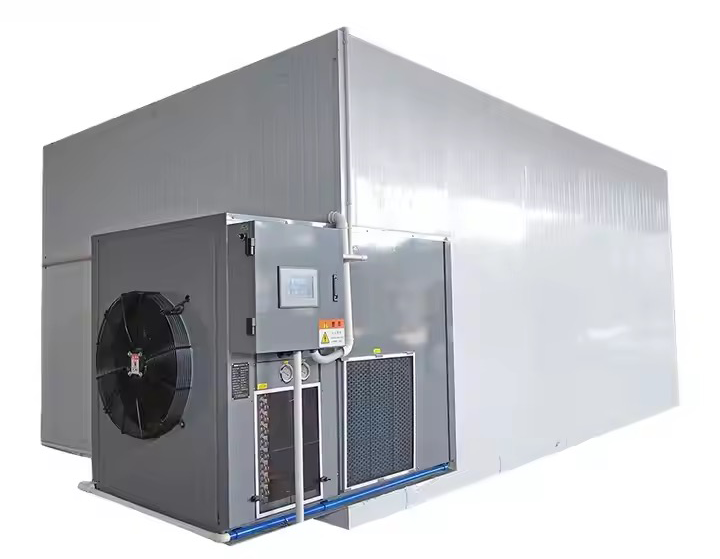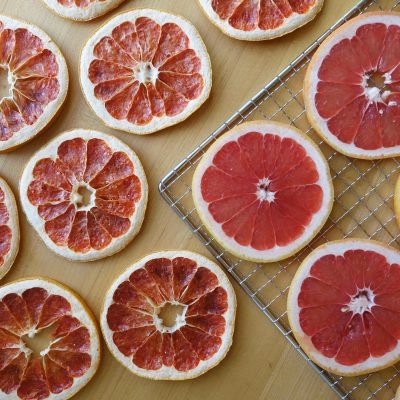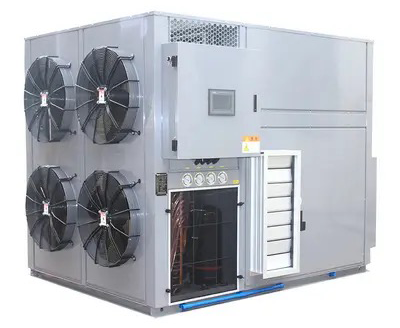
Content Menu
● Introduction
● What is a Heat Pump Dryer?
>> Key Components of a Heat Pump Dryer
● How Does a Heat Pump Dryer Work?
● Benefits of Using Heat Pump Dryers for Food Processing
>> Applications of Heat Pump Dryers
● Do Heat Pump Dryers Need Plumbing Connections?
>> 1. Water Drainage
>> 2. Considerations for Installation
● Common Misconceptions about Heat Pump Dryers
>> Misconception 1: They Are Just Like Conventional Dryers
>> Misconception 2: They Require Complicated Setup
>> Misconception 3: They Are Only Suitable for Certain Foods
● Maintenance Tips for Heat Pump Dryers
● Conclusion
● FAQ
>> 1. Do heat pump dryers need a water supply?
>> 2. How often do I need to empty the water reservoir?
>> 3. Can I use a heat pump dryer for all types of food?
>> 4. Are heat pump dryers more expensive than traditional dryers?
>> 5. What maintenance do heat pump dryers require?
Introduction
In the realm of food processing, drying plays a crucial role in preserving food quality, extending shelf life, and enhancing flavor. Food drying machines, particularly heat pump dryers, have gained popularity due to their energy efficiency and ability to maintain product integrity. This article explores the intricacies of heat pump dryers, including their design, functionality, and whether they require plumbing connections.

What is a Heat Pump Dryer?
A heat pump dryer is an advanced drying technology that utilizes a refrigeration cycle to extract moisture from food products. Unlike traditional dryers that rely on direct heat sources, heat pump dryers operate by transferring heat from the environment to the drying chamber. This method not only conserves energy but also preserves the nutritional value and flavor of the food.
Key Components of a Heat Pump Dryer
- Evaporator: Absorbs moisture from the air inside the dryer.
- Compressor: Increases the pressure and temperature of the refrigerant.
- Condenser: Releases moisture outside the dryer.
- Expansion Valve: Regulates refrigerant flow.
How Does a Heat Pump Dryer Work?
The operation of a heat pump dryer involves several stages:
1. Air Intake: Ambient air enters the dryer through an intake vent.
2. Moisture Absorption: The evaporator cools the air, causing moisture to condense.
3. Heat Transfer: The compressor increases the temperature of the refrigerant, which then heats up the air.
4. Drying Process: Warm air circulates through the drying chamber, evaporating moisture from the food.
5. Condensation Removal: Moisture is collected and expelled outside or into a reservoir.
This cycle continues until the desired moisture content is achieved in the food products.
Benefits of Using Heat Pump Dryers for Food Processing
Heat pump dryers offer several advantages over traditional drying methods:
- Energy Efficiency: They consume significantly less energy by reusing heat.
- Quality Preservation: The low-temperature drying process helps retain nutrients and flavors.
- Environmentally Friendly: Reduced energy consumption translates to lower carbon emissions.
- Versatility: Suitable for various food products, including fruits, vegetables, and herbs.
- Consistent Results: Heat pump dryers provide uniform drying results due to controlled temperature and humidity levels.
- Reduced Operating Costs: Although initial costs may be higher, operational savings are significant over time due to lower energy usage.
Applications of Heat Pump Dryers
Heat pump dryers are widely used in various sectors of food processing:
- Fruit Drying: For producing dried fruits like apples, apricots, and raisins while maintaining their natural sweetness and color.
- Vegetable Drying: Ideal for dehydrating vegetables such as carrots, tomatoes, and bell peppers for long-term storage without losing nutritional value.
- Herb Drying: Preserves essential oils and flavors in herbs like basil, thyme, and oregano.
- Meat Drying: Used in jerky production where maintaining texture and flavor is crucial.

Do Heat Pump Dryers Need Plumbing Connections?
One common question among users is whether heat pump dryers require plumbing connections. The answer largely depends on the specific model and its design features.
1. Water Drainage
Most heat pump dryers do not require direct plumbing connections for water drainage. Instead, they typically feature:
- Internal Water Reservoirs: These models collect condensed water in a tank that needs to be emptied manually. This is convenient for users who prefer flexibility in placement without needing to connect to existing plumbing systems.
Water Reservoir in Heat Pump Dryer
- Drainage Hose Options: Some models allow for a drainage hose to be connected to a sink or drain, facilitating automatic water removal without plumbing modifications. This option is beneficial for high-volume operations where continuous drying is necessary.
2. Considerations for Installation
When installing a heat pump dryer, consider these factors:
- Location: Ensure adequate space for airflow and maintenance access. Proper ventilation is essential to prevent overheating and ensure efficient operation.
- Humidity Levels: High humidity environments may affect performance; proper ventilation is crucial. If placed in a humid area without adequate airflow, it may lead to longer drying times or reduced efficiency.
Common Misconceptions about Heat Pump Dryers
Misconception 1: They Are Just Like Conventional Dryers
While both types serve similar purposes, heat pump dryers use advanced technology that sets them apart in terms of efficiency and quality preservation. Conventional dryers often operate at higher temperatures which can degrade food quality over time.
Misconception 2: They Require Complicated Setup
Most heat pump dryers are designed for straightforward installation without extensive plumbing work. Users can typically set them up with minimal effort compared to traditional systems that may require professional installation.
Misconception 3: They Are Only Suitable for Certain Foods
Heat pump dryers are versatile machines capable of handling a wide range of food products effectively. Their adjustable settings allow users to customize drying conditions based on specific food requirements.
Maintenance Tips for Heat Pump Dryers
To ensure optimal performance and longevity of your heat pump dryer, regular maintenance is essential:
- Clean Filters Regularly: Clogged filters can restrict airflow and reduce efficiency. Cleaning them every few weeks or as recommended by the manufacturer can help maintain performance.
- Check Seals and Insulation: Inspect door seals and insulation regularly to prevent air leaks that could affect drying efficiency.
- Monitor Water Reservoirs: If your model has an internal reservoir, ensure it is emptied regularly to avoid overflow issues during operation.
- Keep the Exterior Clean: Dust and debris can accumulate on external surfaces; regularly cleaning these areas helps maintain airflow and prevents overheating.
Conclusion
Heat pump dryers are an excellent investment for food processing businesses looking to enhance their drying capabilities while maintaining product quality. Their energy efficiency and minimal need for plumbing connections make them an attractive option for various applications. As consumers increasingly seek high-quality dried foods, investing in advanced drying technology can provide a competitive edge in the market.
The versatility of heat pump dryers allows businesses to diversify their product offerings while ensuring consistent quality across different types of foods. With proper maintenance and understanding of their operation, these machines can significantly contribute to an efficient food processing workflow.

FAQ
1. Do heat pump dryers need a water supply?
Heat pump dryers do not require a direct water supply; they typically collect moisture in an internal reservoir or allow for drainage through a hose.
2. How often do I need to empty the water reservoir?
The frequency of emptying the water reservoir depends on usage; it may need to be emptied after each drying cycle or less frequently based on load size.
3. Can I use a heat pump dryer for all types of food?
Yes, heat pump dryers are versatile and can effectively dry various foods like fruits, vegetables, herbs, and meats.
4. Are heat pump dryers more expensive than traditional dryers?
While initial costs may be higher, heat pump dryers save money in energy bills over time due to their efficiency.
5. What maintenance do heat pump dryers require?
Regular maintenance includes cleaning filters and ensuring proper airflow; consult your user manual for specific guidelines.











